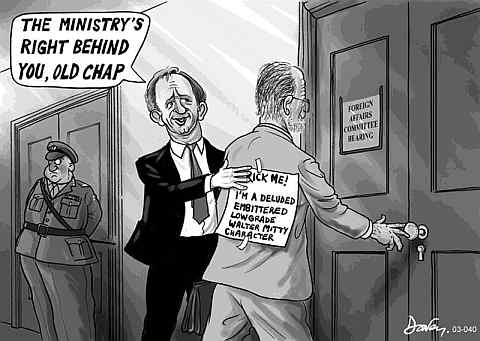Carryfast:
sammyopisite:
Carryfast:
kr79:
Carryfast:
ramone:
kr79:
Even now the swedes often use relatively modest powers at 60 tonThey need to speak to Carryfast he will let them know where they are going wrong .
Really
.They don’t need me to tell them anything they don’t already know and that I was taught almost 37 years ago.
yes but there was plenty of 110s doing the same work. Same as now even in sweden there are more r480s than r620s
It would be interesting to see the fuel consumption figures that you’d end up with if you compared a 110 or an F12 and a 140 all running at 50t gross or a 480 v a 620 running at 60t.I’d bet that it would be the the more powerful options in all cases that came out on top and I think the same would apply if you used the bigger engines,in derated form,at 40t.
When we had the "Samson " with D/D V8 at 290 and I had a 250 ■■■■■■■ in my viewline we often ran together carrying the same loads same weight but the samson tared off about 4 tons heavier and the fuel consumption was 3 to 4 for the samson whereas the ■■■■■■■ was around 5 and that was with a straight 6 ZF box whereas the samson had a 15 speed fuller and was a lot heavier on fuel I recall it used to work out that the samson used about a third more fuel than the ■■■■■■■ powered wagon. We also often swapped wagons half way through a run and that made no difference so it was not down to individual drivers.
cheers JohnnieYou’re concentrating on those zb peak power figures again and forgetting all about the fact that,as is still being proved here,the Brits couldn’t tell the difference between a 9 Litre non turbo bus engine v a naturally aspirated 14 litre truck engine or between peak power outputs compared to a torque curve.
In both those cases you’re actually comparing dumb (naturally aspirated ■■■■■■■■ with dumber (non turbo two stroke 9 Litre bus engine used in a heavy top weight truck).Which is why the Americans,being the clever lot that they are,were busy developing much better versions of both engines in turbocharged form.Which were certainly available during the early-mid 1970’s at a time when the Brits were still ordering and using Gardner powered day cabbed heaps at worst or non turbocharged 7 Litre V6 and 9 Litre V8 Detroit bus engines or naturally aspirated ■■■■■■■ engines to run in 32t + trucks at best.
It’s all about relative torque curves not peak power outputs and the engine which can put out the most power,at the lowest rpm,running at equivalent weights will,in most cases,be the most fuel efficient and productive.In this case the comparison would be the difference in torque between a (derated) turbocharged 8V92 Detroit compared to the non turbocharged 6V71 or 8V71 and the Volvo F10/F12 at 32t-38t and Scania 140 v the F12 running at around 50t,and now up to date the Scania 480 v the 620 at 60t.Or even a derated 620 running at 40t.
That is far to technical for me I was only a driver and I was able to tell if a wagon was a good motor by the way it did the job in hand the D/D was very good as you would always get a lot more green shield stamps the down side it would take longer to fill up.
cheers Johnnie

